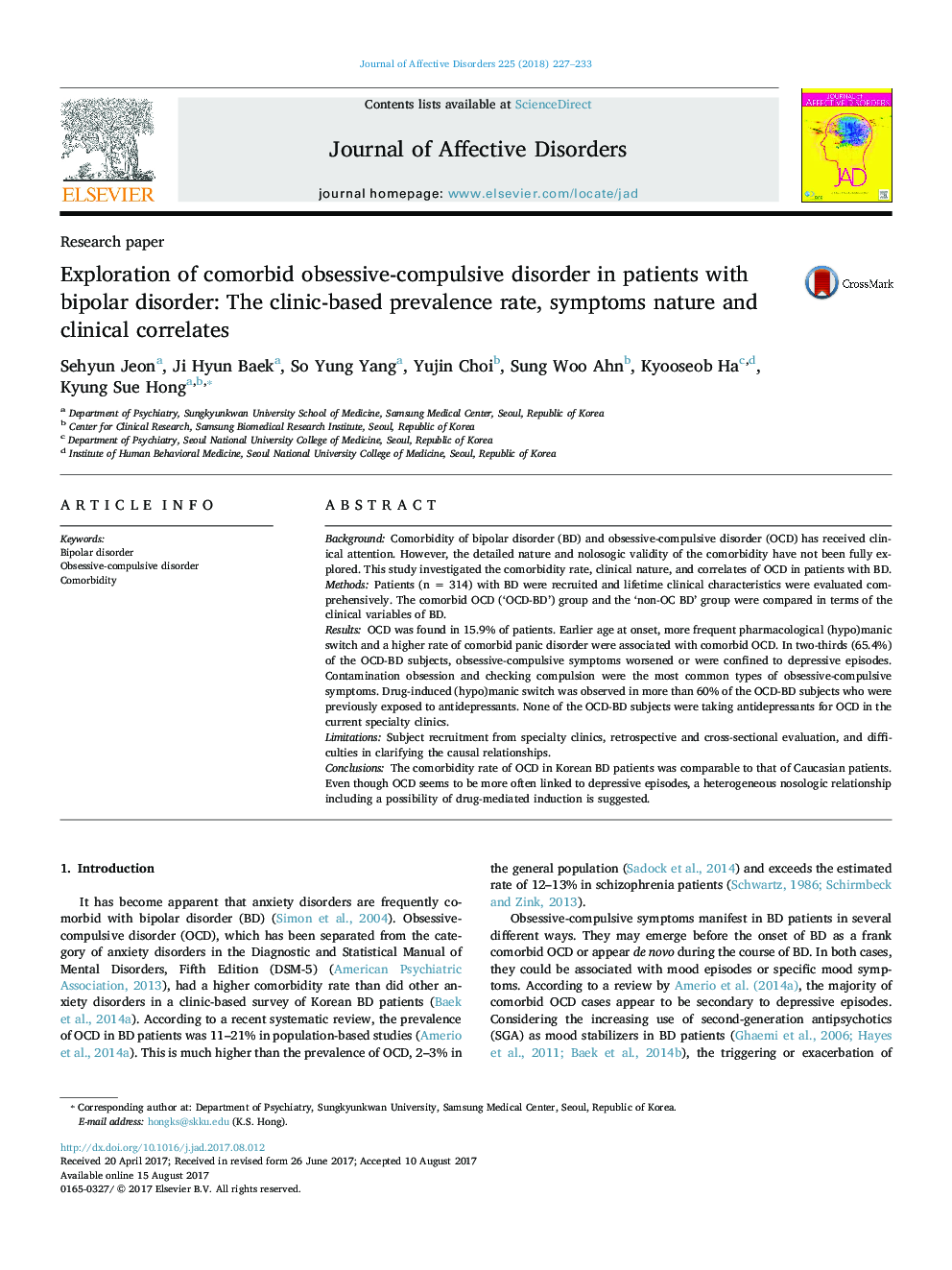| کد مقاله | کد نشریه | سال انتشار | مقاله انگلیسی | نسخه تمام متن |
|---|---|---|---|---|
| 5721713 | 1608100 | 2018 | 7 صفحه PDF | دانلود رایگان |
- In BD, comorbid OCD was associated with earlier onset, and comorbid panic disorder.
- 57.5% of the OCD-BD subjects showed worsening of OC symptoms during depressive episodes.
- Two-thirds of the OCD-BD subjects had experienced drug-induced (hypo)manic switch.
- None of the OCD-BD subjects were taking antidepressants for OCD at the time of study entry.
BackgroundComorbidity of bipolar disorder (BD) and obsessive-compulsive disorder (OCD) has received clinical attention. However, the detailed nature and nolosogic validity of the comorbidity have not been fully explored. This study investigated the comorbidity rate, clinical nature, and correlates of OCD in patients with BD.MethodsPatients (n = 314) with BD were recruited and lifetime clinical characteristics were evaluated comprehensively. The comorbid OCD ('OCD-BD') group and the 'non-OC BD' group were compared in terms of the clinical variables of BD.ResultsOCD was found in 15.9% of patients. Earlier age at onset, more frequent pharmacological (hypo)manic switch and a higher rate of comorbid panic disorder were associated with comorbid OCD. In two-thirds (65.4%) of the OCD-BD subjects, obsessive-compulsive symptoms worsened or were confined to depressive episodes. Contamination obsession and checking compulsion were the most common types of obsessive-compulsive symptoms. Drug-induced (hypo)manic switch was observed in more than 60% of the OCD-BD subjects who were previously exposed to antidepressants. None of the OCD-BD subjects were taking antidepressants for OCD in the current specialty clinics.LimitationsSubject recruitment from specialty clinics, retrospective and cross-sectional evaluation, and difficulties in clarifying the causal relationships.ConclusionsThe comorbidity rate of OCD in Korean BD patients was comparable to that of Caucasian patients. Even though OCD seems to be more often linked to depressive episodes, a heterogeneous nosologic relationship including a possibility of drug-mediated induction is suggested.
Journal: Journal of Affective Disorders - Volume 225, 1 January 2018, Pages 227-233
